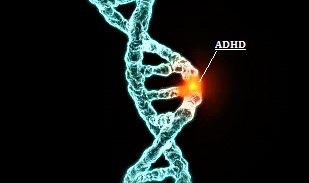Introduction:
The Genetics of Attention-deficit/hyperactivity disorder (ADHD) is a neurodevelopmental disorder that affects millions of individuals worldwide, particularly children and adolescents. ADHD is characterized by symptoms of inattention, hyperactivity, and impulsivity, which can significantly impact a person’s academic, social, and professional life. While environmental factors and lifestyle choices play a role in ADHD development, genetics plays a crucial role in its etiology. This article explores the intricate relationship between genetics and ADHD, shedding light on the hereditary nature of this complex disorder.
Understanding ADHD: A Brief Overview
ADHD is a heterogeneous disorder, meaning it presents a wide spectrum of symptoms and severity levels. Its core symptoms include inattention, marked by difficulty focusing on tasks, forgetfulness, and frequent mistakes; hyperactivity, characterized by restlessness and fidgeting; and impulsivity, which leads to hasty decision-making and interrupting others.
Children with ADHD often struggle in academic settings, have trouble forming and maintaining friendships, and display challenging behaviors at home and at school. Adults with ADHD may face difficulties managing time, organizing tasks, and sustaining employment.
The Genetic Component of ADHD
Research spanning decades consistently points to a significant genetic component in ADHD development. Family, twin, and adoption studies have shown that individuals with a family history of ADHD are at higher risk of developing the disorder themselves. Siblings of ADHD patients are approximately three to four times more likely to have ADHD than the general population.
Candidate Genes and Genome-Wide Studies
Scientists have identified several candidate genes associated with ADHD. These genes are involved in various neurological processes, such as dopamine regulation, neurotransmitter signaling, and synaptic function. Dopamine, in particular, plays a crucial role in the brain’s reward system and is implicated in attention and impulse control.
Genome-wide association studies (GWAS) have also provided valuable insights into ADHD genetics. These studies analyze large sets of genetic data to identify common genetic variants associated with the disorder. GWAS have highlighted specific genes involved in brain development and neural communication as potential contributors to ADHD risk.
Dopamine and the Brain
Dopamine, a neurotransmitter, plays a central role in the brain’s reward and pleasure pathways. It also modulates attention, motivation, and movement. Dysregulation of dopamine signaling is strongly linked to ADHD.
Several genes involved in dopamine regulation have been identified as risk factors for ADHD. One of the most extensively studied is the DRD4 gene, which encodes a dopamine receptor. Variants of this gene have been associated with increased impulsivity and decreased attentional control.
The Role of Environmental Factors
While genetics plays a significant role in ADHD development, environmental factors cannot be overlooked. Maternal smoking, alcohol or drug use during pregnancy, premature birth, and exposure to environmental toxins are among the external factors linked to an increased risk of ADHD.
Moreover, the interaction between genetic susceptibility and environmental factors can further influence ADHD’s expression and severity. For instance, children with a genetic predisposition to ADHD may be more vulnerable to environmental stressors.
Epigenetics: A Bridge Between Nature and Nurture
Epigenetics is a fascinating area of research that explores how environmental factors influence gene expression without altering the underlying DNA sequence. Epigenetic modifications can be reversible and occur throughout life, potentially affecting ADHD risk.
Epigenetic studies in ADHD have uncovered alterations in gene expression patterns related to dopamine signaling and brain development. These findings provide a deeper understanding of how genetic and environmental factors converge to shape ADHD’s complex pathogenesis.
Implications for Treatment and Intervention
Understanding ADHD genetic underpinnings has profound implications for treatment and intervention strategies. Genetic studies can help identify potential drug targets and pave the way for personalized medicine approaches. Medications targeting dopamine receptors have shown promise in managing ADHD symptoms. Genetic information could help predict an individual’s response to specific medications.
Furthermore, early identification of individuals at high genetic risk for ADHD could lead to targeted interventions and support. Behavioral interventions, cognitive-behavioural therapy, and educational accommodations can significantly improve outcomes for children and adults with ADHD.
Conclusion
ADHD is a multifaceted disorder with both genetic and environmental factors contributing to its development. The genetic component, particularly genes involved in dopamine regulation and neural communication, plays a critical role in ADHD’s pathogenesis. Epigenetic mechanisms further link inherited susceptibility to environmental influences. While genetics is not the sole determinant of ADHD, understanding its role is vital for advancing treatment and support for those affected by this condition. By continuing to unravel ADHD genetics complexities, we can work towards a better future for individuals living with this disorder.




